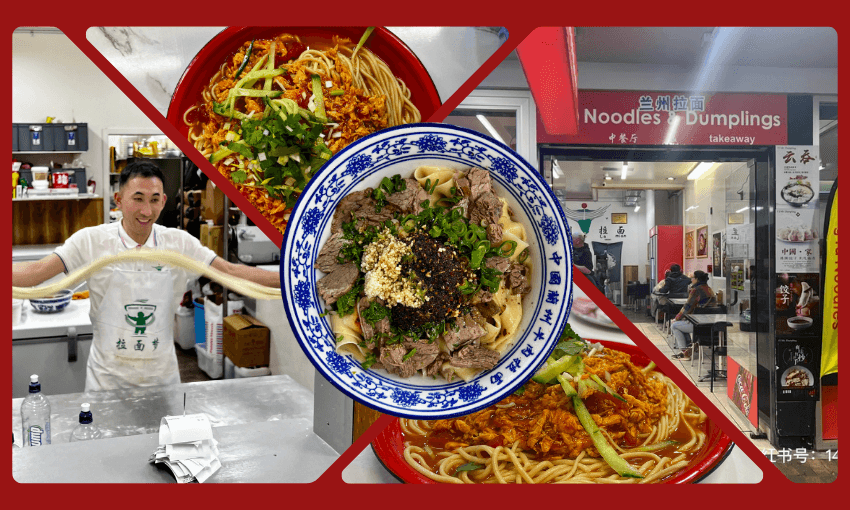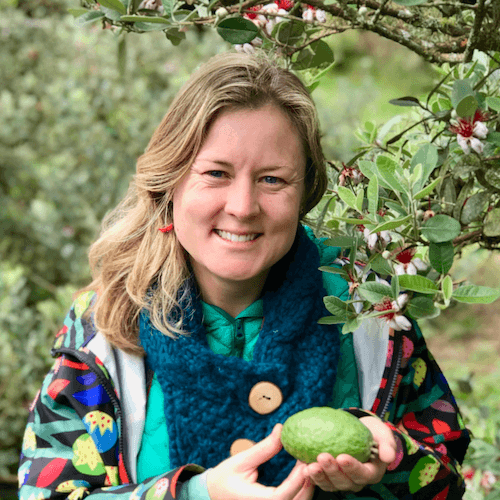Table Service: The Courtenay Place eatery is the perfect place to crouch low over wipe-down furniture and slurp your way through some exceptional cooking.
Table Service is a column about food and hospitality in Wellington, written by Nick Iles.
This is a letter of apology. An apology for judging a restaurant on the flimsiest of grounds, and a basic misunderstanding that, of course, more than one thing can be true at the same time. I won’t pretend otherwise: I thought FJ Noodles and Dumplings was just that smorgasbord place on Courtenay Place. That one where drunk students go to fill up on carbs and fried food before and after drinking. Which isn’t entirely untrue, but something else is also true. Something quite remarkable. It may well be the best place in the city to get noodles. Proper, traditionally hand-pulled noodles.
On arrival, you may notice the long dining room feels like a cross between the business class lounge at an international airport and a 90s dystopian thriller starring Tom Cruise. Giant TV screens play videos of people making dumplings and pulling noodles by hand. Music hums ethereally, part sedative, part meditation tool that enhances your mood when you give in to it. High-resolution images of the food are dotted around the room, and the entire right-hand wall is a gigantic but slightly lower-resolution picture of all the spices used in Chinese cookery. The low faux-marble tables and even lower stools are utilitarian – this is not the spot for a luxuriant three-hour dinner, it is a place to crouch low over wipe-down furniture and slurp your way through some exceptional cooking.
There are plenty of dishes on the various menus, but ignore everything except the small laminated A4 one. That’s the hand-pulled noodle menu.. There are six varieties of noodle dishes, and for each you can select your noodle thickness. For me, it’s hard to look past the extra wide and thick ones, the kind that get knotted and chewy in unexpected places and thin and lacy in others.
FJ Noodles and Dumplings specialises in lamian: wheat flour, hand-pulled noodles from northern China. This traditional noodle has been described in records dating back to the 16th century, and the method has hardly changed to this day. When your order is placed and a bell is rung, the chef approaches the counter at the back of the dining room. He carefully unwraps the frankly intimidating pile of dough and cuts a portion away. Using his full body weight, he pushes it down firmly, pulling it back and forth to create that familiar elasticity. In time, and with effort, a huge ribbon appears. It’s held up high in front of his face before being spun elegantly and slapped back down. This happens a couple more times before the noodles are whisked to the kitchen, plunged into boiling water, and garnished according to your order.
At your table, there’s a station of chopsticks and spoons, chilli oil spilling from its jar and vinegar in a teapot, all ready for what’s about to arrive.
The “beef sour cabbage soup” is a dish that thrillingly veers between extremes. The cabbage is almost astringent, and yet, when set against a deep, gelatinous broth, it balances and creates something harmonious. The brisket, even after a good mix, is still tied together with thin strips of fatty connective tissue. It’s the kind of meat that divides a room between those who know and those who don’t. As you eat, the broth takes on all that acidity and fat and remains bright and clean despite being made from brisket and sour cabbage. But it is those noodles. Noodles that are long and wide with a bounce that they never lose. As the dish progresses, the noodles soak up the broth. They become more intense and more savoury. A texture like this is not easy to perfect, especially not at this scale. It is so easy for a noodle to become washy and disintegrate as you eat. Or worse, to firm up and become dense and dull.
The “dry mix egg noodles” is another enigmatically titled dish I have eaten on more than one occasion and still don’t fully understand. The bowl is built with a generous portion of those noodles, but this time thin and long like spaghetti that has gotten out of control. The egg is whisked and cooked over a very high heat so it blisters and forms thick ribbons, which are poured directly on top of the noodles. The stewed tomatoes are sweet and have a freshness and simplicity that is remarkable on their own. I have spent more time than I care to admit poking at this bowl trying to work out where the flavour is coming from. I refuse to ask, and I stand by this. Some things need to remain a mystery in life.
What I do know is that a splash of Chinese vinegar from the teapot on the table brings out all the natural acidity and umami of a tomato. This is not a dish designed to be flashy or full of spice and layers of texture. Rather, it is elegant in its restraint and softness. Of all the dishes, it was the one that underwhelmed me most on first taste, but it is the one I still think about most and will return to first.
There is more to be eaten, more to see on this tiny yet impressive menu. The “dry chilli beef” is all heat and oil, covered in fistfuls of minced garlic and ginger. The “braised beef noodle soup” is hearty and healthy and fights everything the impending winter will throw at you.
FJ Noodles and Dumplings, I am sorry. Sorry that I could not look past the smorgasbord. You are a rare thing on a difficult road, a true one-of-a-kind that I will return to again and again.
Forever yours,
Nicholas A Iles







